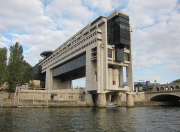
Taking decisive action, Poland's Culture Minister Bartłomiej Sienkiewicz has announced the removal of the board of directors overseeing the reconstruction of the historic Saxon Palace,
citing concerns about the management of public funds.
The palace, a significant national symbol housing the Tomb of the Unknown Soldier, is undergoing restoration as part of a broader initiative to revive key historical sites in Warsaw.
Sienkiewicz, underscoring the importance of the Saxon Palace, stated, "This is the Altar of the Fatherland, the last great post-war wound of Warsaw. A scar that needs to be healed." He emphasized the project's significance not just as a restoration of a historical monument but as a symbolic healing of the nation's wartime scars.
The reconstruction of the Saxon Palace, along with the Brühl Palace and townhouses on Królewska Street, is mandated by Polish law, requiring substantial financial resources. At a press conference, Sienkiewicz expressed concerns over the previous board's handling of these funds, specifically questioning the delay in awarding a tender for securing the foundations after archaeological excavations.
"This torrent of money must somehow be used purposefully," Sienkiewicz emphasized.
Highlighting the cultural significance of the Tomb of the Unknown Soldier, Minister Sienkiewicz called for a dignified environment for this revered site. "It can't be that on one side of the Altar of the Fatherland there is a hotel with a casino, and on the other - a business center. This is derogatory, symbolically derogatory," he remarked.
Warsaw’s Saxon Palace – Brief History
The Saxon Palace, also known as Saski Palace, holds a significant place in Poland's cultural and historical landscape. This iconic building in Warsaw has a storied past, dating back to its origins in the 17th century. It was initially a baroque palace constructed by Jan Andrzej Morsztyn, which was later expanded and remodeled into the Saxon Palace by Augustus II, one of Poland's Saxon kings, and his son Augustus III in the early 18th century.
Throughout its history, the Saxon Palace served various purposes. In the early 19th century, it housed the Warsaw Lyceum, where Frédéric Chopin's father taught. Later, it became the seat of the Polish General Staff. Notably, in 1925, the Tomb of the Unknown Soldier was established within the palace's arcade, a site that has become a symbol of national reverence.
The palace's significance extends to the realm of military intelligence as well. A secret tunnel discovered under the palace's ruins, thought to have been constructed in the 1930s, was likely used for transferring military reports and information. The palace itself played a role in the breaking of the German Enigma machine cipher in the early 20th century.
However, the Saxon Palace met a tragic fate during World War II. Following the Warsaw Uprising in 1944, German forces, as part of their systematic destruction of Warsaw, demolished the palace. All that remained were fragments of the central arcade, which included the Tomb of the Unknown Soldier.
In 2022, the Polish government has undertaken the task of reconstructing the Saxon Palace, with plans to complete it by 2030. This project is viewed not only as a restoration of an architectural masterpiece but also as a healing of historical wounds and national pride.








































